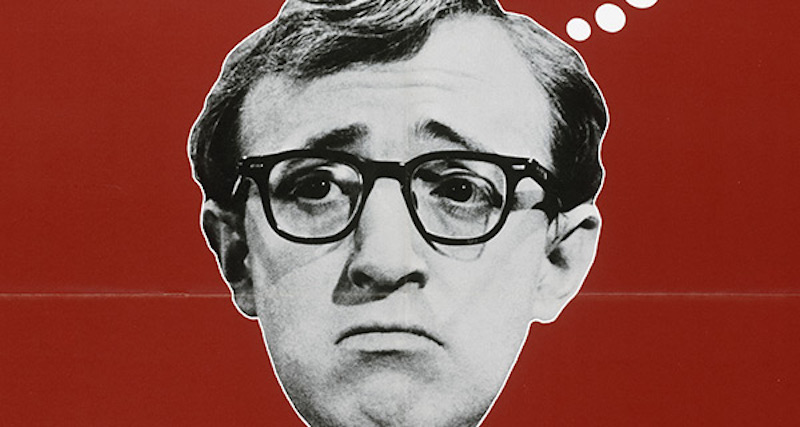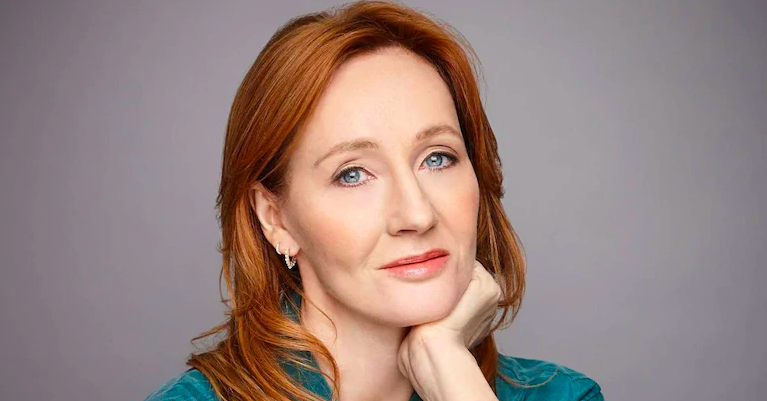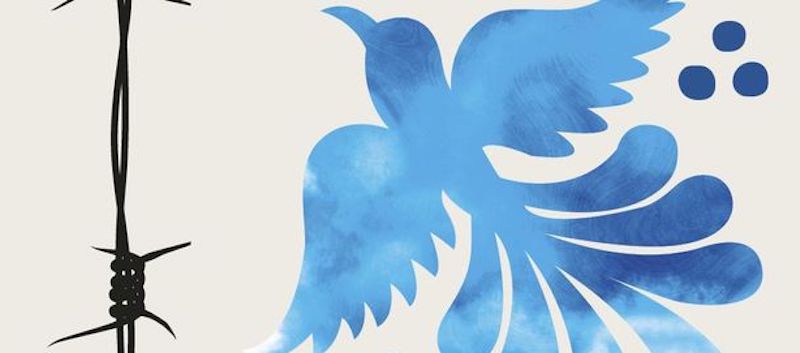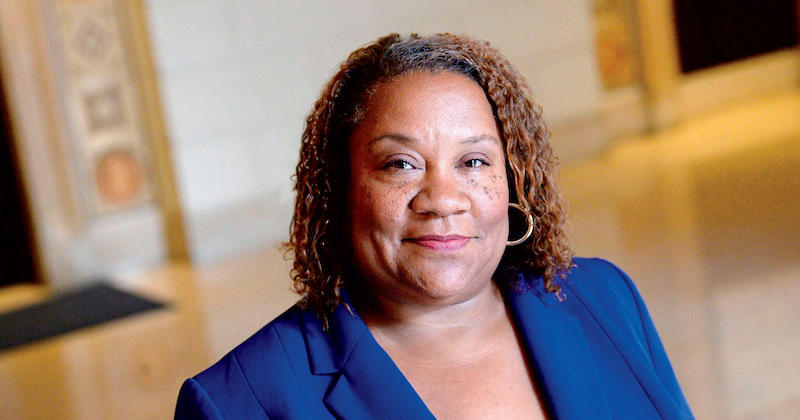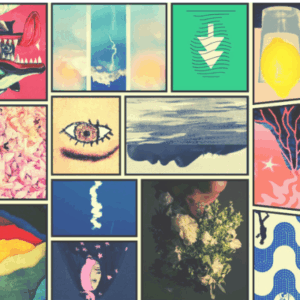
The Ten Biggest Literary Stories
of the Year
And Then We Came to the End
At this point, what is really left to say about 2020? It was pretty bad, overall. Some parts were okay. There were some good books. There were some bad actions. There were some much-needed reckonings. Our lives and listicle intros were overwhelmed by a deadly pandemic (bad), a treasonous president (worse), and righteous protests (better, but bittersweet). Still, time stops for no man nor website, and soon it will be 2021. Is the transition from one year to the other symbolic at best? Of course. But this is how we register the shape of our lives, not to mention our content, so there’s no use stopping now.
Without any further ado, you’ll find the third and final installment of our countdown of the 50 biggest literary stories of the year below—so you can remember the good (yes, there was some!), the bad, and the Zoom book launch. It’s time for the top 10, baby.
10. Like the rest of us, publishing had some pandemic-related problems.
In the chaos and uncertainty stirred up by the Covid-19 pandemic, publishers were left scrambling on many fronts. Book promotion was completely upended, with all physical tours cancelled, and publicity plans derailed. Many publishers, banking on more normalcy, started pushing bigger books back to fall 2020, a season that has had . . . a few other things going on.
The glut of books this season has caused its own problems, as authors and publishers find themselves not only competing for limited attention but also for limited paper, as the country’s two major printing companies are in dire straits. “Print runs for new titles are getting squeezed and pushed back,” wrote Alexandra Alter in The New York Times. “Carefully calibrated publication schedules are being blown up as books are moved into late fall and even next year. . . A backlog at the printers can have a ripple effect up and down the supply chain, causing delays at warehouses and slower delivery to booksellers, who may lose out on sales when customers can’t find the books they want.”
Writers are staring down publication dates that keep moving, and possibly publication dates that come without books. It’s particularly damaging for debut and midlist writers. “We’re concerned about the unknown author, the first-time novelist who may be down the pecking order in terms of print priorities,” James Daunt, the chief executive of Barnes & Noble, told the Times. “Booksellers want to get their hands on them, and the copies aren’t there.” –Emily Temple, Managing Editor

9. The Harper’s Open Letter sparked a new round of conversation about free speech and cancel culture.
By itself, the fact that a collection of successful writers and thinkers wrote a fairly anodyne letter about free speech and published it at an outlet in which they are accustomed to publishing, perhaps does not warrant inclusion so high on this list. But the Harper’s Open Letter—and the so-called discourse that followed—was one of the larger battles in the endless cancel culture wars, and seemed like a catalyzing moment for the choosing of sides. But what are the sides, exactly? As is the case with most open letters, the Harper’s version—signed by the likes of Margaret Atwood, Cornel West, and Noam Chomsky—was rhetorically broad and light on specifics. Flat rather than deep, the letter was a ready surface upon which its readers could project their pre-existing ideas about cancel culture and censorship: for some, the former isn’t much more than a branding campaign by those unaccustomed to the swift and public scorn of social media, who equate criticism with censorship; for others, it’s shorthand for the very real chilling effect the digital public square has on free and open discourse.
But even those most devoted to free speech as a core tenet of democracy recognize there are speech acts that cross a line, the standard example of that line being to yell “fire” in a crowded theater. It’s difficult to say where this line should be, though, because “free speech” is functionally—even in America—a continuum defined by specificities.
Deciding where this line is seems to be a very important job in a democracy. I use the word job here rather than tenet because it is ongoing and active, a perpetually frustrating exercise in intra-subjective communication in university classrooms, office Slacks, town council meetings, courthouses… But each one of these conversations, so important to a free and open society, is necessarily about a specific thing, the drawing of a line we can all look at and argue about. The natural inferiority of one race vs. another—to pick a particularly hateful example—used to be on one side of that line, where debate and discourse lives, and now it is on the other.
And this is why the Harper’s Open Letter became such a big story, because at its heart was the question of who has the power to decide where that line is: The college student or the professor? The white nationalist or the counterprotester? The local activist or the national opinion columnist? And, most importantly, who gets to decide where and when someone’s identity can become the subject of someone else’s “debate”?
How you answer these questions probably has a lot to do with your opinion of the Harper’s Open Letter. –Jonny Diamond, Editor in Chief
8. Woody Allen could not publish his memoir (until he could).
Way back in May of 2019, we heard a rumor that nobody wanted to buy Woody Allen’s memoir—having been credibly accused of sexual misconduct made him rather toxic, you see. But then, almost a year later, we found out that a publisher had purchased it after all: Grand Central Publishing, a division of Hachette Book Group, who also published Ronan Farrow, acquired the rights to Allen’s memoir, Apropos of Nothing. Only a few days later, Grand Central’s employees staged a walkout in protest of the book’s publication, and the very next day, the book was canceled.
“The decision to cancel Mr. Allen’s book was a difficult one,” senior vice president of communications Sophie Cottrell said in a statement. “At HBG we take our relationships with authors very seriously, and do not cancel books lightly. We have published and will continue to publish many challenging books. As publishers, we make sure every day in our work that different voices and conflicting points of views can be heard. Also, as a company, we are committed to offering a stimulating, supportive and open work environment for all our staff,” Cottrell continued. “Over the past few days, HBG leadership had extensive conversations with our staff and others. After listening, we came to the conclusion that moving forward with publication would not be feasible for HBG.”
Done and dusted—except not quite. Before the month was out, the book had been (rather unceremoniously) published by Arcade Publishing, an imprint of Skyhorse Publishing. So after all of that, was the book any good? The reviews are in, and they say . . . nah. –ET
7. Bookshop.org—an online alternative Amazon—was born.
Meet Bookshop, an e-commerce site dedicated to making buying books online easy and helping local, independent bookstores in the process. In January, Andy Hunter (co-creator of this website and the publisher behind Catapult) launched Bookshop as an alternative to Amazon, saying, “It’s about reinforcing an industry. Bookshop is about pulling back from the disruptive influence of Amazon.”
(In case anyone needs a refresher, Amazon does things like sabotage sales and break embargoes, which really hurts independent bookstores.)
The ethos behind this B-corp is that bookstores, book clubs, and literary publications are a vital component of our culture. How does an online store help indies? Well, if you visit a bookstore’s specific Bookshop page, that bookstore will receive profits from your order. If you’re shopping on Bookshop broadly, then ten percent of every sale goes into a pool that is distributed evenly amongst participating independent bookstores across the country. And, through their affiliate program, any arts and culture website, publication, or Bookstagrammer can also get ten percent commission, as a reward for continuing the conversation around books. (It’s important to note here that independent booksellers are not unanimously enthusiastic about Bookshop, as many have pointed out the best way to help an indie is to order directly from that store’s site.)
Bookshop really took off this spring, at the height of the coronavirus pandemic. To small stores that had to temporarily close their doors, this was perfect timing. As of today, they’ve raised $10,064,815 for local bookstores—and counting. –Katie Yee, Book Marks Associate Editor
6. Sorry, but: J. K. Rowling.
What does the name J.K. Rowling mean to you at this point? If your blood pressure just skyrocketed, move on from this one, friend; this year has been tough enough.
Still with me? Let’s do it: This year was one in which we were treated to multiple incidents of J.K. Rowling expressing transphobia, and support for transphobes, by espousing the same tired and hateful cliches that have been used to oppress trans people since time immemorial. On each of these occasions, Twitter, of course, reacted; a group of writers reacted to that reaction, publishing an open letter to protest social media backlash in general; another group of writers published another open letter affirming support for trans and non-binary people and recognizing that those in the culture industry have a responsibility to maintain that support.
There’s absolutely nothing new or noteworthy in J.K. Rowling’s statements about trans people—as actor Jen Richards told Indiewire, “The garden variety anti-trans bigotry that J.K. Rowling is spouting, and no matter how it’s disguised as feminism, biology, or common sense, it is plain old bigotry, is, quite frankly, boring.” More interesting is the conversation that emerged in the wake of it among queer and trans communities about reconsidering their relationship to her work, which has been important for some of us as we grew into our gender and sexual identities. Regardless, let’s hope this is the year she calls it quits (she won’t). –Corinne Segal, Senior Editor
5. There were 389837592385292384 books about Trump.
This year, we saw a very regrettable book genre emerge: that of the Trump tell-all. They came from former members of the administration in an apparent play for respectability outside of the Trump circle; they came from people tangentially connected to the president and the First Lady that claimed to have inside knowledge of their past; they came from within the Trump family itself. Just as there seems to be no end to 2020, there is no end to the number of people who think their experience with the Trumps warrants a book deal. (One book, adjacent to the genre, stands out: Bob Woodward’s Rage, a follow-up to his 2018 book Fear, which was not a tell-all but still deserves a mention here for its claim to reveal new information about a presidency to which there is no end of shocking new details.)
Their existence has led to lengthy legal challenges. Michael Cohen, the president’s former attorney, claims he was sent back to prison to prevent him from writing Disloyal, a memoir about his time working for the president. Former national security advisor John Bolton has been sued by the Justice Department over his memoir The Room Where It Happened, as they claim that he did not cooperate during a government review process of the manuscript; unsurprisingly, his legal team, along with the review board that oversaw that process, disputes that account. Mary Trump, the president’s niece, authored a wildly popular book about their family that prompted a lawsuit from Robert Trump, the president’s brother; ultimately, a judge ruled she would be allowed to move forward.
Ultimately, these books were entertainment; they were mostly notable for the giant gap between what they claimed to contribute to the political discourse versus what they actually accomplished, which was nothing, apart from book sales. At their best, they contextualized this administration with details that are horrifying enough to warrant our attention; still, the fact that some of those details were strategically withheld from Congress, while later appearing in a book, is a good enough argument for killing this genre forever. We should see these books for what they are: a stop on an apology tour, an ego trip, or, at best, a distraction from the meaningful work of moving forward. –CS
4. All literary culture moved online.
The pandemic has caused a seismic shift in the way we live; for most of us, it has affected almost every aspect of life. Literary culture was no different. Starting in March, almost every literary event—from conferences, to book launches, to readings, to festivals, to media pitch sessions, to writing classes—was moved online. Many writers had to reimagine book promotion. Many writers bought ring lights. The results? Increased attendance and accessibility but a decreased feeling of community and in some cases, decreased sales numbers.
But the new online literary culture is still evolving. “We remain curious about how we—event organizers, publishers, writers, readers—will all adapt over the longer term, wrote Sam Risak, Tryphena Yeboah, and Anna Leahy in Literary Hub.
The online environment has some of us clinging to assumptions that intimacy means in-person, shoulder to shoulder with other readers, the author’s voice carried on the air around us. Others are considering whether a different kind of intimacy exists online. As Choate says, “Understanding that people are living their lives in normal spaces across the globe—no matter how famous they are—that’s been satisfying for me.” Through the screen, writers and readers get a glimpse of where we live our daily lives. We see each other’s bookshelves and family photos, the color of each other’s walls—and now even rate the Zoom room. We hear an author’s toddler, or the cat who jumps onto the host’s lap. We’re getting to know each other differently as writers and readers.
The only question is, will this new digital literary culture last—and in what forms—once the pandemic is under control? (Or is that too optimistic to even consider?) –ET
3. Everyone read Antiracist Books—or at least bought them.
And I mean everyone. As protests against systemic racism and police violence sparked by the murder of George Floyd sprang up around the country, many people found themselves in need of some education on the subject—and in need of something immediate (and safe) to do with their time and money. In June, nonfiction books about race, like Ibram X. Kendi’s How to Be an Antiracist and Ijeoma Oluo’s So You Want to Talk About Race, shot up the bestseller lists compiled by Amazon, Barnes & Noble, and The New York Times.
“I’m grateful that people are working to seek out information to help them better understand what’s happening in our country, and I hope it’s not a knee-jerk reaction due to shame and guilt and not wanting to be on the outside,” Jason Reynolds, whose book Stamped reached #1 on the Times‘ YA list, told the Times. “I hope people understand that this book is the beginning of a journey of a lifetime. . . . I mean, it’s a wonderful thing to say I’m a New York Times best seller, but it would be more wonderful to be able to say we live in a world that is a little more anti-racist.”
Many consumers rushed to buy their anti-racist books from Black-owned independent bookstores, creating a sometimes overwhelming demand that was increased by social media campaigns—like Amistad Press’ #BlackoutBestsellerList—and editorial coverage; it seemed for a while there as if every single outlet on the internet had compiled their own anti-racist reading list. Books by writers of color did dominate bestseller lists, a result which lingers, though not as completely, as of this writing, and in September, Octavia Butler finally made the New York Times Bestseller list, fulfilling her own prophecy at last.
While reading has always been an important part of social justice work, this unprecedented uptick in both sales and lists prompted some to ask: who are anti-racist reading lists really for? And how useful are they actually? Do they truly signify a cultural shift or are they simply lip service? There was investigation into the history of anti-racist reading lists, and lots of speculation about the difference between buying a book about race and actually reading it. Since there’s no way to tell what people do in their own homes (not yet anyway), only time will tell how much Americans, and the American publishing industry, has learned from all this antiracist reading. –ET
2. The controversy around Jeanine Cummins’s American Dirt.
It’s hard to believe it happened this year. But if you look closely enough at the controversy surrounding the publication of Jeanine Cummins’s American Dirt—which was pitched as a propulsive, suspenseful, issue-driven literary novel—you can sense the first tremors of publishing’s 2020 seismic shift. At its core this is a story about who’s in the room making decisions—not just about what gets published, but about who’s worthy of investment post-publication.
Published in January by Flatiron, an imprint of Macmillan, American Dirt was the benefactor of a huge publicity push and was talk of the (publishing) town before most people had read it (it received early praise from the likes of Sandra Cisneros and Julia Alvarez). But as Cummins’s novel made its way into the broader pre-pub world the criticism began, led my Myriam Gurba’s vigorous December 12, 2019 polemic at Tropics of Meta, in which she notes that “Dirt is a Frankenstein of a book, a clumsy and distorted spectacle and while some white critics have compared Cummins to Steinbeck, I think a more apt comparison is to Vanilla Ice.” Things picked up speed from there.
By late January, a group called Dignidad Literaria, spearheaded by Gurba and fellow writer Roberto Lovato, organized an open letter at this website in anticipation of American Dirt’s selection as a coveted Oprah Book Club pick. From that letter: “In the informed opinions of many, many Mexican American and Latinx immigrant writers, American Dirt has not been imagined well nor responsibly.” To its credit, rather than stonewalling the loud and persistent criticism, Macmillan agreed to meet with Dignidad Literaria on February 3 and “committed to substantially increasing Latinx representation, from authors to staff.” As Dignidad Literaria co-founder David Bowles described it: “This is a clear victory. … We think this is a move in the right direction.” –JD
1. 2020 sees a seismic shift in publishing power.
American book publishing is vastly different today, December 22, 2020, from what it was December 22, 2019. As many of the previous 49 stories on this list have shown, broader upheavals in American society have been acutely felt in the publishing world, from walkouts and labor disputes to long overdue shifts in racial equity. As mentioned above many of the changes to the industry were foreshadowed by the American Dirt story, which made news, and stayed news. As the pandemic revealed once and for all the fragile illusions of American egalitarianism, summer 2020’s widespread protests for racial justice in the wake of George Floyd’s murder renewed the urgent need for deeper change across every aspect of American life.
Organized around the hashtag #PubWorkersForBlackLives, June 8, 2020 was declared a Publishing Day of Action, as organizers asked publishing workers to demonstrate their solidarity with the Black Lives Matter movement by walking out and/or making public declarations of support. Among the goals of the action was to “pressure publishers to stop publishing racist books,” and “make our industry safer and more welcoming for Black people.” Publishing houses of all sizes were quick to release public statements in support of Black Lives Matter, some more committed and concrete than others.
The first actual change—aside from the assorted internal committees devoted to rearticulating long understood problems—was the July 8 hiring of Dana Canedy to take charge of Simon & Schuster, the eponymous imprint of the Big 5 company (more on that below*), making the former Pulitzer Prize administrator the first Black woman to head a major imprint. Just over a month later, Lisa Lucas, executive director of the National Book Foundation, was named senior vice president and publisher of Pantheon and Schocken Books, an imprint of Penguin Random House.
These are clearly changes that will have an impact on decision-making at the highest level, and will hopefully lead to meaningful results down the chain-of-command: specifically about whose voices are important, and who deserves a chance at a wider audience. But leadership isn’t the only problem facing a publishing industry that, over the last 70 years, has published white authors 95 percent of the time. The other issue is money. Starting salaries in corporate publishing, based as it is in one of the most expensive cities in the world, have long been the biggest barrier to entry, and have reinforced an apprenticeship system that privilege’s the wealthy. To remedy this, companies like Macmillan and Penguin Random House have committed to raising starting salaries to $42,000 and $45,000, respectively, and independent publisher Grove Atlantic has raised its entry level salary to $40,000 (Grove Atlantic provides financial support to this website). If those numbers continue to go up, it will have as much of an impact on publishing’s diversity problem as any of the high profile hires.
Corporate publishing has done little over the years to inspire much confidence in its ability to reform itself, but 2020’s changes signal something like a step in the right direction. –JD
*Of course, one of the biggest publishing stories of 2020 is also a 2021 story: it was announced November 25 that Penguin Random House had come to terms with ViacomCBS to acquire Simon & Schuster, its erstwhile Big 5 rival, some time in early 2021. And thus the Big 5 becomes the Big 4.
Emily Temple
Emily Temple is the managing editor at Lit Hub. Her first novel, The Lightness, was published by William Morrow/HarperCollins in June 2020. You can buy it here.










